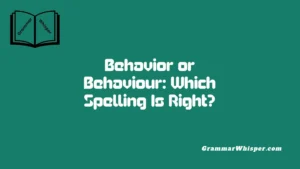There was a moment at a past workplace when someone innocently mentioned in team chats that an employee often arrived late. While there wasn’t any official complaint, the comment traveled through social media whispers like wildfire. The result? A fractured team spirit, damaged trust, and tense relationships that took months to mend. This wasn’t outright confrontation or direct accusations, but it still carried the sting of betrayal. That’s the hallmark of Dry Snitching – subtle, often overlooked, yet painfully impactful.
It’s the kind of thing that usually happens in casual situations – a bit of harmless gossip, an innocent-sounding remark – yet it can cause serious harm. Especially with the rise of online communication in 2025, misplaced honesty or intentional vagueness spreads faster than ever. Whether you’re navigating office break rooms or scrolling through the comment sections of group DMs, it’s easy to see how dry snitching plays out in real time. The key is knowing how to spot these subtle reveals, and most importantly, when to respond – or when to simply step away from the fray.
This isn’t just about calling someone out for vague behavior – it’s about preserving your clarity and protecting your own standing before things spiral beyond repair. A strong guide, some social insight, and a deep understanding of hidden cues and meanings can help you navigate this complex minefield. In both digital and real-world spaces, staying aware of how your words and others’ can affect reputations is no longer optional – it matters.
The Roots of the Term: Cultural, Regional, and Social Origins
The phrase “dry snitching” emerged within African American Vernacular English (AAVE) and street culture, where the rules about loyalty and discretion hold weight. The term began appearing in prison slang, hip-hop lyrics, and inner-city communities. It reflects a world where direct calls for betrayal could be dangerous – but indirect slips still get the message across. Over time, it migrated into mainstream culture, surfacing in rap songs, internet threads, and informal conversation.
Dry Snitching vs. Snitching: What’s the Real Difference?
Direct snitching gets blunt: “John stole from the store.” Dry snitching whispers instead: “I saw someone leave with a few extra items.” Both expose behavior, but the intent and method differ.
Direct snitching: named individuals, confessed facts, clear statements.Dry snitching: vagueness cloaked in insinuation, hints designed to inform without owning up.
| Trait | Direct Snitching | Dry Snitching |
| Named Target | Yes | No |
| Consequence | High | Ambiguous |
| Tone | Blunt, formal | Passive-aggressive, implied |
| Plausible Denial | No | Yes |
The Psychology Behind Dry Snitching
Why do people dry snitch? It avoids social fallout while still airing grievances. It plays on power dynamics and risk reduction. Letting others infer wrongdoing takes heat off the snitcher yet achieves the same end. Psychologically speaking, it’s a form of manipulation masked as caution – a sly move that betrays trust without owning it.
Common Real-World Examples of Dry Snitching
In schools, a student drops hints about cheating without naming culprits. In workplaces, someone “casually” mentions missing deadlines to management. In friend circles, one person says, “Someone at the party spilled secrets,” prompting suspicion.
Example phrases:
- “I saw someone grab extra time on that report…”
- “Somebody took food from the staff fridge.”
- “Heard a couple of people skipped the workshop.”
Interpretation depends on context – and raises tension without accountability.
Dry Snitching in the Workplace: A Closer Look
The office is prime territory for dry snitching. From subtle hints in Slack to “forgot I sent that email” cover stories, coworkers may drop hints about missed deadlines, policy breaches, or theft.
Case Study: In a marketing team, someone subtly spreads: “Seems like April report disappeared – hope it shows up.” HR investigates but no one owns it. The rumor creates suspicion, tensions rise, and productivity tanks – yet no one took responsibility. That’s dry snitching in action.
Social Settings and the High Cost of Dry Snitching
At parties or family gatherings, offhand remarks like “I saw someone lie to mom” can fracture relationships. Even without naming names, trust erodes.
Impact:
- Erodes trust in friend groups
- Creates paranoia
- Shifts blame without resolution
Dry snitching in social settings leaves people isolated, anxious, and unsure who to trust.
Is Dry Snitching Ever Justifiable?
Sometimes, dry snitching walks a fine ethical line.
- Self-preservation: avoiding direct blame avoids retaliation
- Protecting others: hinting at unsafe behavior to prevent harm
Case study: A nurse hints to colleagues, “I heard someone skipped hygiene checks last night.” It sparks safety protocols without naming names – but still protects patients.
Even so, society tends to penalize dry snitching as dishonorable. The key lies in intention and aftercare: offering explanations or context shows transparency.
Dry Snitching in Music, Film, and Internet Culture
Artists like Jay-Z and Kendrick Lamar weave the term into lyrics. On Twitter, subtweets say more than direct tweets. TikTok thrives on indirect callouts.
Pop culture breakdown:
| Media | Example |
| Song lyrics | “He say they squared away, but they dry-snitchin’ in the shade.” |
| TV show | A character complains, “Someone’s been ratting on us” without naming anyone. |
| Memes | #SomePeople tags escalate rumors online |
These examples show how dry snitching leverages ambiguity for theatrical effect.
How to Recognize When Someone’s Dry Snitching on You
Listen for hints and loaded language.
- Phrases like “I guess someone…” or “We all know who…”
- Tone that mixtapes accusation with apology Qualifiers like “I’m not saying,” “I might be wrong,” or “I hope I’m mistaken” often signal dry snitching.
What to Do If You’re Being Dry Snitched On
- Stay calm. Don’t mirror their ambiguity.
- Ask direct questions: “Who specifically are you referring to?”
- Limit your response: Say something neutral and firm.
- Reaffirm boundaries: “Let’s talk privately if there’s an issue.”
These strategies help you respond effectively without escalating.
Dry Snitching and Online Behavior: A Digital Lens
Online dry snitching uses screenshots, vague tweets, and rumor-baiting comments. People post proof without tags – thinking they’re private.
This behavior can slip into harassment or cyberbullying. It also extends to Slack channels, email threads, and forums.
How to Avoid Being a Dry Snitch Without Losing Integrity
- Be transparent and name specifics if necessary
- Choose private conversations for sensitive issues
- Use I-statements: “I’m noticing…” instead of “Someone messed up”
- Encourage open dialogue and maintain trust
These habits maintain your integrity and avoid dishonesty.
Final Thoughts
Dry snitching reveals how language shapes relationships and power dynamics. It blurs transparency with manipulation – and that blur can hurt people. Striving for clear communication and mutual respect makes interactions stronger. Language shouldn’t just carry meaning – it should carry responsibility.
FAQs
What’s an example of dry snitching in everyday life?
E.g., “Someone’s been using my parking spot” instead of saying who. It raises suspicion with no accountability.
Is dry snitching worse than regular snitching?
It depends. Dry snitching avoids confrontation but undermines trust more subtly – often making it feel harder to call out.
Why do people dry snitch instead of being direct?
They might fear backlash or want to manipulate social narratives without taking blame.
Can dry snitching get someone fired or punished?
Absolutely. Even without names, implication can prompt investigations that affect careers or social standing.
Is there ever a positive reason to dry snitch?
Sometimes. Hinting at unsafe or harmful actions without shaming individuals can save face and protect others – if done with the right intent.











